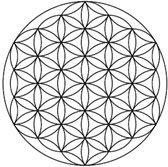 The flower of life is a geometrical shape composed of multiple evenly-spaced, overlapping circles arranged in a flower like pattern with six fold symmetry like a hexagon. The perfect form, proportion and harmony of the FOL has been known to philosophers, architects and artist around the world. Pagans consider it to be sacred geometry containing ancient religious value depicting the fundamental forms of space and time. In the pagan sense, it is believed to contain a type of Akashic Record of basic information of all living things and is the visual expression of the connections of life that run through all sentient beings.
The flower of life is a geometrical shape composed of multiple evenly-spaced, overlapping circles arranged in a flower like pattern with six fold symmetry like a hexagon. The perfect form, proportion and harmony of the FOL has been known to philosophers, architects and artist around the world. Pagans consider it to be sacred geometry containing ancient religious value depicting the fundamental forms of space and time. In the pagan sense, it is believed to contain a type of Akashic Record of basic information of all living things and is the visual expression of the connections of life that run through all sentient beings.
In New Age thought, the Flower of Life has provided what is considered to be deep spiritual meaning and forms of enlightenment to those who have studied it as sacred geometry. There are groups of people all over the world who derive particular beliefs and forms of meditation based (at least in part) on the Flower of Life.
The flower of life symbol represents important meaning to many throughout history. The symbol can be found in manuscripts, temples and art throughout cultures around the world.
The most common form of the ‘Flower of Life’ is hexagonal pattern (where the center of each circle is on the circumference of six surrounding circles of the same diameter), made up of 19 complete circles and 36 partial circular arcs, enclosed by a large circle.
ALCHEMY
Components of the Flower of Life have been a part of the work of Alchemists. Metatron’s Cube is a symbol derived from the Flower of Life which was used as a containment circle or creation circle. More on Alchemy.
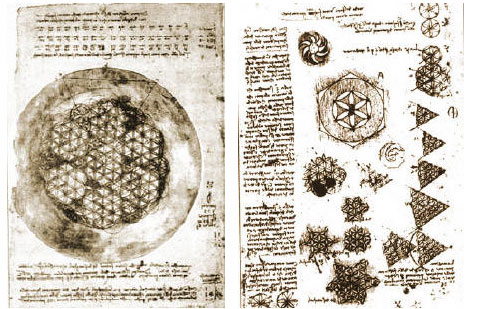
Leonardo da Vinci studied the Flower of Life’s form and its mathematical properties. He drew the Flower of Life itself, as well as various components such as the Seed of Life. He drew geometric figures representing shapes such as the platonic solids, a sphere, a torus, etc., and also used the golden ratio of phi in his artwork; all of which may be derived from the Flower of Life design.
SEED OF LIFE

The ‘Seed of Life’ is formed from seven circles being placed with sixfold symmetry, forming a pattern of circles and lenses, which acts as a basic component of the Flower of Life’s design. According to some, the seed of life depicts the 7 days of creation in which God created life.
EGG OF LIFE
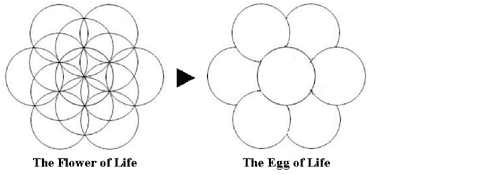
The ‘Egg of Life’ is also a symbol composed of seven circles taken from the design of the Flower of Life. The shape of the Egg of Life is said to be the shape of a multi-cellular embryo in its first hours of creation.
FRUIT OF LIFE
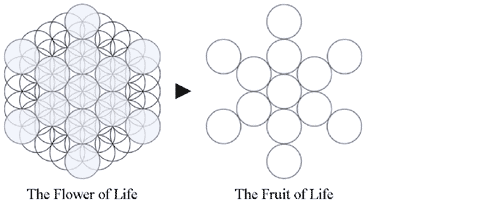
The ‘Fruit of Life’ symbol is composed of 13 circles taken from the design of the Flower of Life. It is said to be the blueprint of the universe, containing the basis for the design of every atom, molecular structure, life form, and everything in existence. It contains the geometric basis for the delineation of Metatron’s Cube, which brings forth the platonic solids.
METATRON’S CUBE
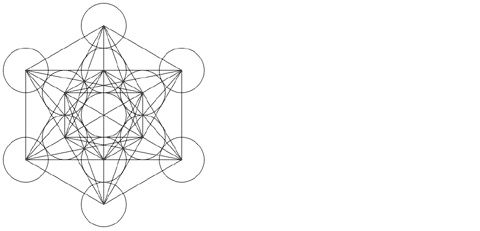
Metatron’s cube depicts the five platonic solids which may be derived form the flower of life. The five platonic solids are geometrical forms which are said to act as a template from which all life springs, according to spiritual belief. The Platonic solids are five structures that are crucial because they are the building blocks of organic life. These five structures are found in minerals, animated and organic life forms, sound, music, language, etc. Metatron’s cube is also considered a holy glyph, used to ward off evil spirits. The Kabbalah’s Tree of life is also thought to be derived from the flower of life.

Historic Locations of The Flower of Life
The following are some of the locations in which the Flower of Life symbol can be seen:
Egypt
The Temple of Osiris at Abydos, Egypt contains the oldest known examples of the Flower of Life. They are at least over 6,000 years old and may date back to as long ago as 10,500 B.C. or earlier. It appears that it had not been carved into the granite and instead may have been burned into the granite or somehow drawn on it with incredible precision. It is thought to possibly represent the Eye of Ra, a symbol of the authority of the pharaoh. Other examples can be found in Phoenician, Assyrian, Indian, Asian, Middle Eastern, and medieval art.
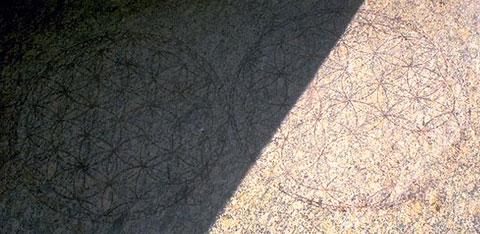
China
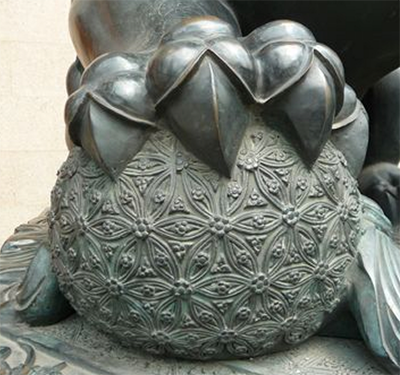
Israel
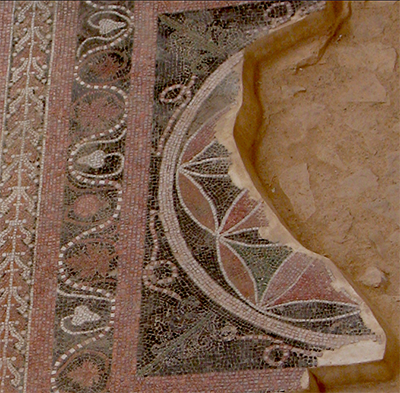
Japan – Various temples.
India – The Harimandir Sahib (Golden Temple), Hampi, and the Buddhist Temples in Ajanta.
Turkey – City of Ephesus, in Izmar
Italy
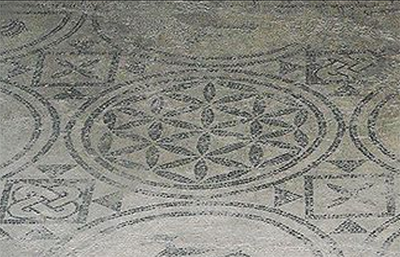
Spain – Cordoba, in ‘la Mezquita’










